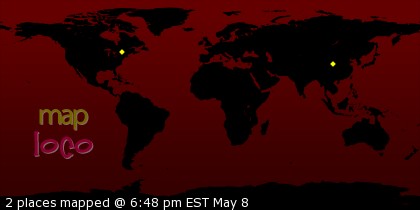---------------------------
Solar system “packed with planets” looks like our own

Nov. 6, 2007
World Science staff
Astronomers say they have found a distant solar system that looks more like ours than do any of the others known. Though it lacks any evidence of habitable worlds, they added, some might turn up there.
It’s the “first quintuple planetary system,” and may have as yet-undetected Earth-like planets or habitable moons, said San Francisco State University astronomer Debra Fischer, a member of the research team.
It seems to be “packed with planets,” as ours is, she added. All the planets detected there are much heavier than Earth, she noted, which poses problems for their habitability. But Earth-sized planets, practically undetectable outside our Solar System with current technology, could easily have gone unnoticed.
The finding “has me jumping out of my socks,” said Geoff Marcy of the University of California, Berkeley, another member of the research team. The group announced the findings at a press conference in Pasadena, Calif. Tuesday.
The discovery suggests solar systems much like our own are common, he added. “Our Milky Way galaxy, with 200 billion stars, contains billions of planetary systems—many as rich as our own,” he said. “We strongly suspect many of these harbor Earth-like planets.”
More than 250 planets outside our system are known, but most of them are in solar systems or in arrangements that would seem to make it hard for life to form there.
A possible exception was announced last April with a report that a planet orbiting the star Gliese 581 might be habitable. But astronomers have begun debating whether that’s the case, according to Fischer’s team. It’s very tricky to define a star’s “habitable zone,” the region around it with the right temperatures for liquid water to exist, Marcy said.
The new findings—involving the star 55 Cancri, visible with binoculars in the constellation Cancer—do reveal a habitable-zone planet, they added. But it seems too large for life as we know it to take root there: it weighs the equivalent of an estimated 45 Earths, which scientists say would probably make it a gas giant like Saturn, though smaller.
“Such planets are probably not habitable,” Marcy said; but it might well have habitable moons that remain to be found. “If there is a moon orbiting this new, massive planet, it might have pools of liquid water on a rocky surface,” said Fischer. The habitable-zone giant is about as far from its star as Venus is from the Sun; but it would be cooler than Venus because the star is somewhat smaller and fainter than ours, the researchers added.
The other planets around 55 Cancri, whose whole planetary coterie took 18 years to discover, are also giants, they said. Researchers discovered the worlds using the Doppler technique, in which a planet’s gravitational tug is detected by the wobble its gravity produces in the parent star.
A key feature of the newfound system is that most of its worlds have near-circular orbits around the star, Fischer said. That’s important because it means they wouldn’t suffer drastic temperature variations at different times of the year; rather, their temperature fluctuations would be more or less equivalent to those of our seasons. The 55 Cancri system also resembles ours in terms of its approximate size, the researchers said. A paper on the findings is to appear in The Astrophysical Journal.





No comments:
Post a Comment